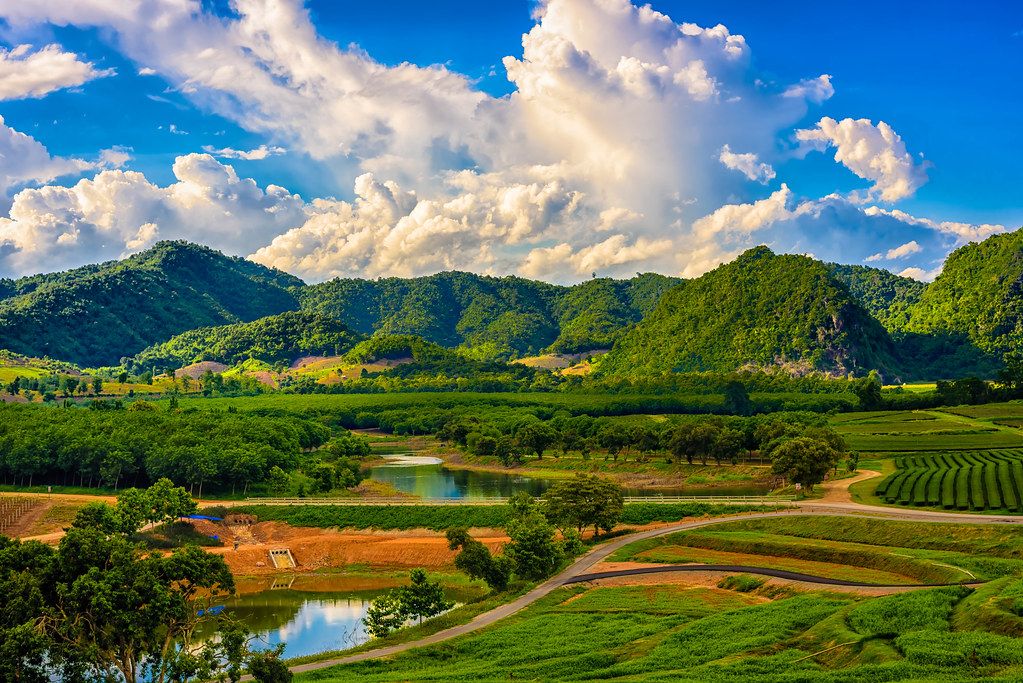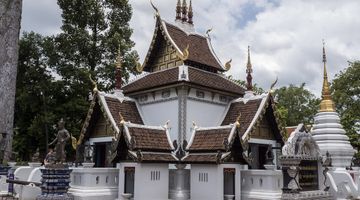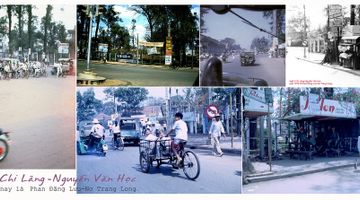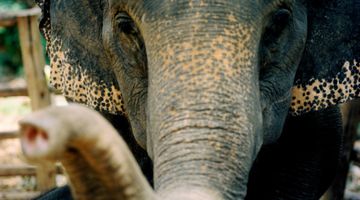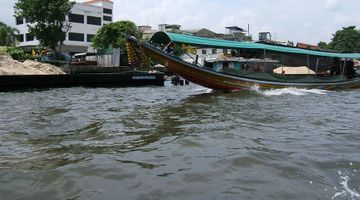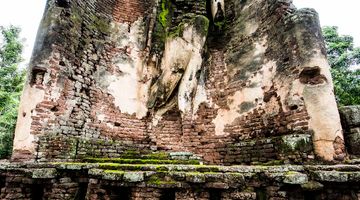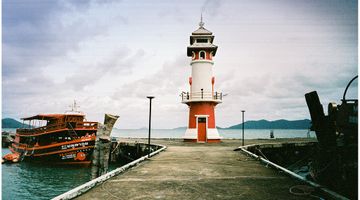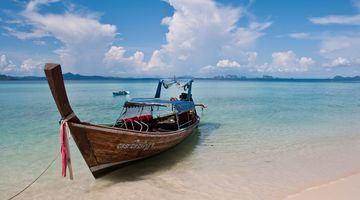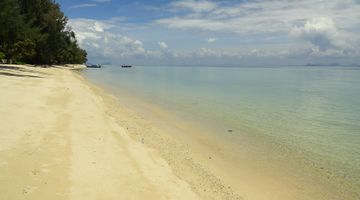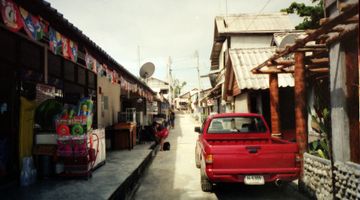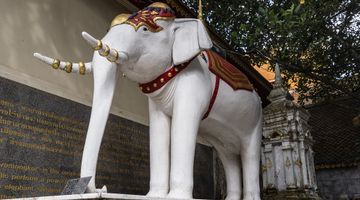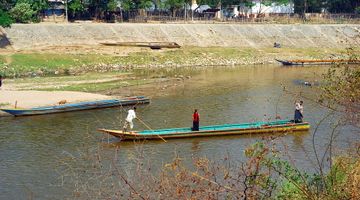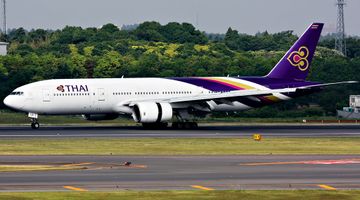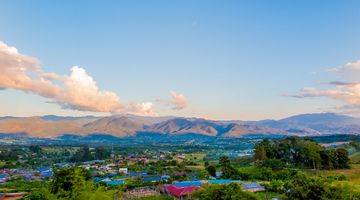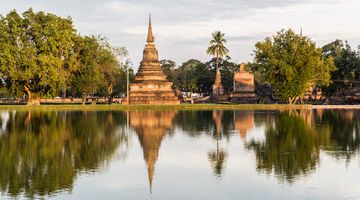Chiang Rai Travel Guide
In a nutshell
Located just over 3 hours by bus from Chiang Mai, Chiang Rai is a city of around 200,00 people that is rapidly growing more popular with travellers.
Why go to Chiang Rai
Proximity to the borders with both Myanmar and Laos make Chiang Rai a convenient stop for travellers on their way to cross into Laos for the slow boat journey to Luang Prabang. Now, however, it is becoming a tourist destination in its own right, and many travellers in northern Thailand choose to spend several days taking in the city sights.
Chiang Rai is a popular spot in part due to its location and natural beauty, surrounded by stunning mountain ranges and thick rainforest, whilst the city itself features attractive temples and historic buildings. It’s a busy city though, so don’t come with too many preconceptions about the area - it’s a real mix of modern industry and the amazing landscapes of northern Thailand. There’s a lot to do in the area, whether your preference is for history and culture, trekking and appreciating nature or relaxing with a few drinks and exploring night markets.
When to go to Chiang Rai
When planning your visit, it’s best to try and avoid rainy season and to avoid some of the hotter months, where temperatures in and around Chiang Rai soar.
November to January is winter in this region of Thailand and the weather is fairly cool, whilst summer runs from March to May and can be extremely hot - often in the 40s. We visited in February and found it pleasantly warm without being too hot to enjoy.
Rainy season runs from May to September, and whilst it is possible to work around the rain showers to enjoy mild weather and lush green countryside and forests, many prefer to avoid this season if they can.
Where to stay in Chiang Rai
When it comes to staying in Chiang Rai, you’ll be spoilt for choice. As tourism in the area has increased, so has the range of different accommodation options and you’ll find everything from hostels for the tightest budgets right the way through to luxury hotels, should you want to treat yourself for a couple of nights.
Generally backpackers will find themselves staying around the Jedyod road area, where there is a cluster of budget guesthouses and hostels. These can cost just a few dollars per night for a shared dorm that’s basic but clean and comfortable. High-end hotels, resorts and spas can be found along the riverbank and outside of town, and have all the amenities you could want for your stay in Chiang Rai.
Where to eat in Chiang Rai
Similarly when it comes to food and drink, as with all traveller-friendly cities in Thailand there is an array of choice to suit everyone’s tastes. Don’t, however, expect it to be cheap – sometimes you’ll find yourself paying far more than you might expect to in Thailand for very average food.
Many travellers, especially those on a budget, choose to eat at Chiang Rai’s night bazaar, where you can find any street food you can imagine and prices are a little more purse friendly.
There are lots of bars and restaurants both around the night bazaar and in areas towards Jedyod road, many offering decent northern Thai food, although there are some western eateries as well - including a couple of fairly popular but pricey Italians.
How to get to and from Chiang Mai
There’s plenty of transport options to help you get in and out of Chiang Rai, whichever way you’re travelling. The city even has an international airport, so some travellers find it easy to fly to Chiang Rai and get a taxi to and from their hotels, which typically costs about THB300 (less than 10USD).
Most people however, will find themselves taking the bus - whether it’s a budget friendly public bus, an air conditioned coach or a private mini van transport. Like we said, there are a lot of options so it’s a very easy place to include in your Southeast Asia itinerary!
If you’re travelling to or from Chiang Mai, as most people are, the buses take around 3 hours and there are three different classes of bus to choose from, everything from the most basic options to those offering water and snacks.
There are also buses between Chiang Rai and Bangkok, which take around 10-11 hours and run a couple of times per day, both during the day and overnight. As always, take care when travelling by night bus in Thailand and be sure to use a reputable company that follows decent safety standards.
Daily buses run to Mae Sai, which is on the border with Myanmar (Mae Sai–Tachilek border crossing) and takes just over an hour to reach, whilst the border town with Laos, Chiang Khong (Chiang Khong–Huay Xai border crossing), is also served by several daily buses and takes 2 to 3 hours. This wealth of transport as well as the easy ability to get to Myanmar, Laos or other regions of China makes Chiang Rai a great place to visit.
Is Chiang Rai safe to visit?
When it comes to safety in Chiang Rai, it is generally known as a safe city, with the biggest problem and risk of injury coming from traffic and road accidents as with much of the rest of Thailand.
Drug crime is another serious problem in the area and drugs should be avoided without question. As a border province in Thailand’s golden triangle, it’s a bit of a notorious place for contraband flowing between the borders with Myanmar and Laos.
Finally, the usual issues like food poisoning and illnesses common to Thailand in general have as much chance of affecting you in Chiang Rai as anywhere else so it’s worth taking sensible precautions.

